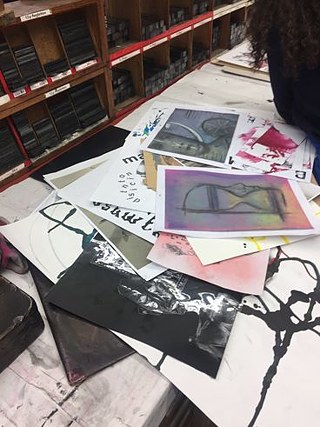Art Academies and Migration
“In art there are no borders”

The obstacles to university-level art studies are considerable. With special programmes, art academies in Berlin and Leipzig support artists who have fled from conflict zones, and in doing so place reliance on unconventional perspectives in their instruction approaches.
If he had not come to Berlin he would have become an engineer like his father and two of his brothers as well, says Dachil Sado. Along with medicine, engineering is one of the most prestigious professions in his homeland of Iraq. But now he is in Berlin and has made acquaintance with both the opportunities and the freedom of artistic work: “Because what is lacking in my homeland is art. Could art change something? That is my question, that’s what I’d like to know. As yet I don’t have an answer.” For this reason he wishes to return. He arrived in Berlin via roundabout routes, was granted asylum here, learned German, started a course of study in engineering and realised that this was not his path after all.
Dachil is one of 20 so called visiting students in the foundation class at the Weißensee Academy of Art (Weißensee Kunsthochschule Berlin). It supports interested refugees in preparing their applications Berlin to an art or design college. This programme started in summer 2016, and was initiated by artist Ulf Aminde, professor of time-based arts (film, video, media installations, performance, mixed media).
Art needs no residence status
In these courses, people with widely differing biographies, experiences and expectations encounter each other. There were conflicts at first, but now he always enjoys coming here, Dachil explains. One of his works shows a white map marked with pins. The first time he saw works by Joseph Beuys, he did not understand them. In his homeland there are no galleries, and museums do not exhibit any contemporary art. For this reason, a workshop at the Berliner Museum Hamburger Bahnhof was especially important for him.
He places importance on not being called a refugee, because “in art there are no borders, art has no nationality,” putting the matter with great firmness.
“Safe Space” and legal remedies
Lecturers who themselves came to Germany as migrants support the *foundationClass participants in developing portfolios of their own works. This is not only a question of different concepts of art, but above all of extreme life circumstances.
„There are many works dealing with escape, or with experiences and impressions of Germany, of German bureaucracy and German asylum policy,” says Miriam Schickler. “But the themes can be completely different.” As programme coordinator, she notes that the biographies of refugee artists often take on more importance than their works. ”We seek to offer the participants a space – a ‘safe space’ where they can feel secure and are not constantly reduced to their residence status, but can simply be artists. It is in this sense that the part of our manifesto must be understood where we speak of the *foundationClass as a `legal remedy´ that aims to secure for the participants as equal an entry as possible to institutionalised art and cultural sectors, and thereby to change their status from ‘refugee’ to that of art students.”
Different perspectives
To provide refugee artists with direct access to university-level study programmes, a task force directed by Rayan Abdullah, a professor of typography at the Academy of Visual Arts Leipzig (Hochschule für Grafik und Buchkunst Leipzig /HGB) launched the Academy for Transcultural Exchange (Akademie für transkulturellen Austausch /ATA). Since October 2016, nine students can participate in a special programme as well as in other courses and seminars for one to four semesters. The precondition was, as in the case of all applicants for university study places, passing a proficiency test. If the artistic and linguistic criteria are met, entry into the regular programme of study is possible.
a book about nothing
The young men from Syria and Iraq in Prof. Abdullah’s seminar seem a bit tired – there is only one woman. They must master the same assignments as their German-speaking fellow students. The latter can well imagine that art studies plus German-language instruction is no easy task. However, typography, the semester topic at the introductory level, will lead to very divergent results: for native German students, designing “a book about nothing” is above all a matter of having ideas and inspirations, for students from Arabic countries an aesthetic challenge. The Middle Eastern notion of pictorial representation is like a carpet pattern filled with colours and ornamentation, says the typographer, who was born in Mosul (Iraq) in 1957and has been teaching in Leipzig since 2002, and who also sees to it that ATA enjoys a great resonance with the public.
not just welcoming gestures
Even if both art academies must still contend for the continuation of these programmes, mainly due to legal and financial reasons, interest is high and a model for other study locations. Even the names of the two programmes signal that the issue here is not merely one of welcoming gestures, but also of a need to open up the contents and perspectives of university-level art studies.











